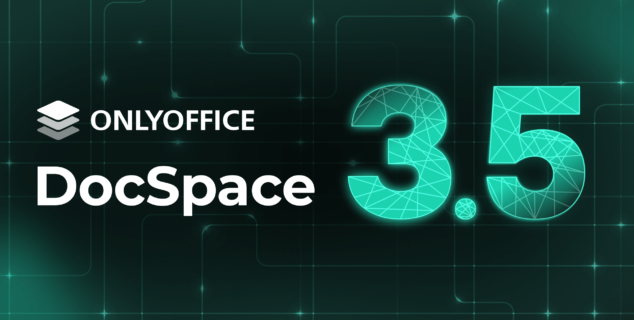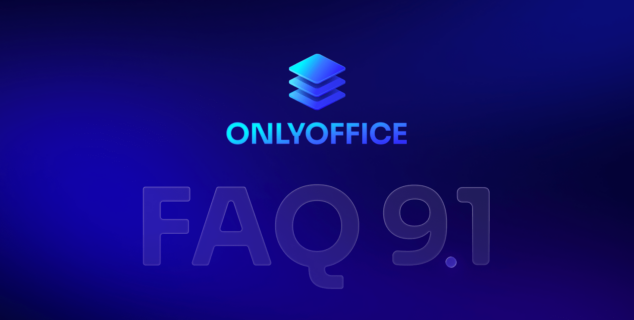7 OCR tools to recognize your PDFs
When working with scanned files, image-based PDFs, or digitized documents, extracting and editing text is often necessary. That’s where OCR (Optical Character Recognition) tools come into play. Below is a look at some of the most effective OCR solutions available today—both desktop and online—offering a range of features for different needs, including options with built-in editing capabilities.

What is an OCR Tool?
An OCR (Optical Character Recognition) tool is a software application that analyzes images containing text—such as scanned documents, photos, or image-based PDFs—and converts the visual data into machine-encoded text. It works by detecting characters, words, and layout structures within the image, using pattern recognition, machine learning, and language models to accurately reconstruct the original content. OCR technology enables searchability, text editing, and data extraction from documents that would otherwise remain static and non-editable.
Now that you know what an OCR tool is, let’s see which options we have at our disposal.
1. ONLYOFFICE Docs
ONLYOFFICE Docs is a powerful open-source office suite known for its compatibility with Microsoft Office formats and robust collaborative editing tools. What makes it stand out in the OCR world is its plugin-based approach: users can install an OCR plugin inside the document editor and recognize text from scanned PDFs and images without leaving the ONLYOFFICE environment. This functionality is available in both the free desktop version and the online cloud version.
The OCR plugin supports multiple recognition languages, making it useful for international teams. You can also upload JPG, PNG, or PDF files, extract the text, and insert it directly into your document. For those who want complete control over their data, the desktop version runs entirely offline, ensuring privacy.
Besides the traditional OCR plugin, ONLYOFFICE offers an AI-based plugin that can recognize text in PDFs using artificial intelligence. This AI-based method often delivers better results with complex layouts or low-quality scans and supports multiple languages as well. The AI plugin goes beyond OCR, offering other useful tools such as text summarization, translation, and grammar explanations—making it a versatile assistant for document work. Find out how to install your favorite AI provider in this article.

Pros:
- Fully integrated into a document editing suite
- Available in both desktop and online versions
- Free and open-source with commercial options
- Supports multiple languages for recognition
- Includes both traditional OCR and AI-based text recognition
- Offers extra AI tools (summarization, translation, etc.)
- Secure and privacy-respecting
Cons:
- AI plugin requires internet connection and may depend on external AI services
Get ONLYOFFICE and recognize text from PDFs and images with ease
Extract text from scanned documents using OCR—directly inside your editor. Work online by creating a free ONLYOFFICE DocSpace account or offline with the free desktop app for Windows, Linux, or macOS.
2. Adobe Acrobat Pro DC
Adobe Acrobat Pro DC is a well-established leader in the world of PDFs, offering a comprehensive toolset for creating, editing, annotating, and converting PDF documents. One of its most impressive features is built-in OCR that activates automatically when you open a scanned document. The software is smart enough to detect when a file is image-based and prompts the user to recognize the text. Acrobat Pro also preserves formatting remarkably well and allows editing directly within the recognized document, even in complex layouts.

It supports multiple export formats, such as Word or Excel, and offers high accuracy in language recognition. Batch OCR processing is available, which is a huge advantage for teams working with large volumes of scanned files.
Pros:
- Automatic OCR activation for scanned PDFs
- High accuracy and formatting retention
- Allows editing directly in the recognized file
- Supports batch processing
Cons:
- Expensive subscription model
- UI can be overwhelming
- Only available for Windows and macOS
3. ABBYY FineReader PDF
ABBYY FineReader is considered one of the most accurate OCR engines in the world. Designed for professionals and enterprises, it goes beyond basic recognition by preserving layouts, styles, and structure. FineReader uses AI-based recognition to reconstruct tables, columns, headers, and other complex elements. It supports over 190 languages, making it ideal for multilingual documents and global businesses.

In addition to OCR, it comes with powerful PDF editing tools, document comparison, and collaboration features. However, its user interface, while clean, may seem overwhelming to casual users due to the number of advanced options.
Pros:
- Accurate OCR results
- Maintains original formatting and structure
- Supports a vast range of languages
- Useful for complex document layouts and legal files
- Includes editing and document comparison tools
Cons:
- High cost for full version
- Might be too complex for occasional users
- Windows-only (macOS version is limited)
4. Google Drive + Google Docs
This free and surprisingly effective solution involves uploading a scanned PDF or image to Google Drive and then opening it with Google Docs. Google automatically runs OCR on the file and presents the extracted text in an editable format. While the formatting may not be perfect, it’s more than sufficient for simple documents like receipts, contracts, or letters.
Since it’s part of the Google ecosystem, you can easily share, comment, and collaborate on the recognized text. However, there are limitations regarding file size, image quality, and formatting preservation, and it doesn’t work offline.
Pros:
- Free and easy to use
- No software installation required
- Integrated with cloud storage and collaboration tools
- Suitable for basic OCR tasks
Cons:
- Formatting often lost in complex layouts
- Requires a Google account
- Internet connection mandatory
- No advanced OCR settings or batch processing
5. OnlineOCR.net
OnlineOCR.net is a simple web-based tool for converting scanned images and PDFs into editable text. You just upload your file, select the output format (TXT, DOCX, XLSX), and download the result. It supports several languages and works without registration for small files (up to 15 MB). For larger files or batch processing, you’ll need to create a free account.

Its simplicity is both a strength and a limitation: it works well for basic needs, but lacks the advanced accuracy, layout preservation, or document security features of more sophisticated tools.
Pros:
- No installation or sign-up needed (for small files)
- Quick and easy for one-time tasks
- Free to use with decent accuracy
Cons:
- Limited file size unless registered
- Formatting often stripped away
- Not suitable for confidential or sensitive documents
- No editing capabilities built in
6. Tesseract OCR
Tesseract is an open-source OCR engine maintained by Google. It’s not a ready-made app, but rather a command-line tool that developers and tech-savvy users can integrate into their own software or scripts. Tesseract supports over 100 languages and is highly customizable, making it a favorite in academic, research, and development environments.
Since it’s a library, you’ll need to pair it with a graphical interface or write code to process images. Popular wrappers like OCRmyPDF and tools like gImageReader help make it more user-friendly. Despite the setup effort, Tesseract offers unmatched flexibility.
Pros:
- Free and open-source
- Flexible and customizable
- Supports many languages and scripts
- Can be automated for large-scale use
Cons:
- No built-in user interface
- Requires technical knowledge to set up
- Not ideal for casual users
- Accuracy depends on preprocessing and configuration
7. PDF24 Tools (OCR online)

PDF24 offers a collection of free online tools for handling PDFs, including an OCR feature. You upload your scanned file, and the system returns a searchable PDF that retains most of the original layout. While it’s not as advanced as Adobe or ABBYY, it provides a smooth experience for basic OCR needs without installing any software.
The service runs entirely in the browser and claims to delete files shortly after processing. Still, it’s best to avoid uploading sensitive documents unless you’re sure about the platform’s privacy practices.
Pros:
- Free and user-friendly
- No registration required
- Keeps basic layout in most cases
- Works on any device with a browser
Cons:
- Limited language support
- No export to editable formats like DOCX
- Privacy and security depend on the website
- Not suitable for professional or legal use
Conclusion
OCR tools have become essential for anyone working with scanned documents, PDFs, or images containing text. Whether you’re digitizing paper archives, extracting data, or simply making documents searchable and editable, the right OCR tool can significantly boost your productivity.
When choosing a solution, consider your specific needs—such as accuracy, ease of use, language support, offline availability, and data privacy. From simple online converters to advanced desktop editors, there’s an option out there for every use case.
Create your free ONLYOFFICE account
View, edit and collaborate on docs, sheets, slides, forms, and PDF files online.


